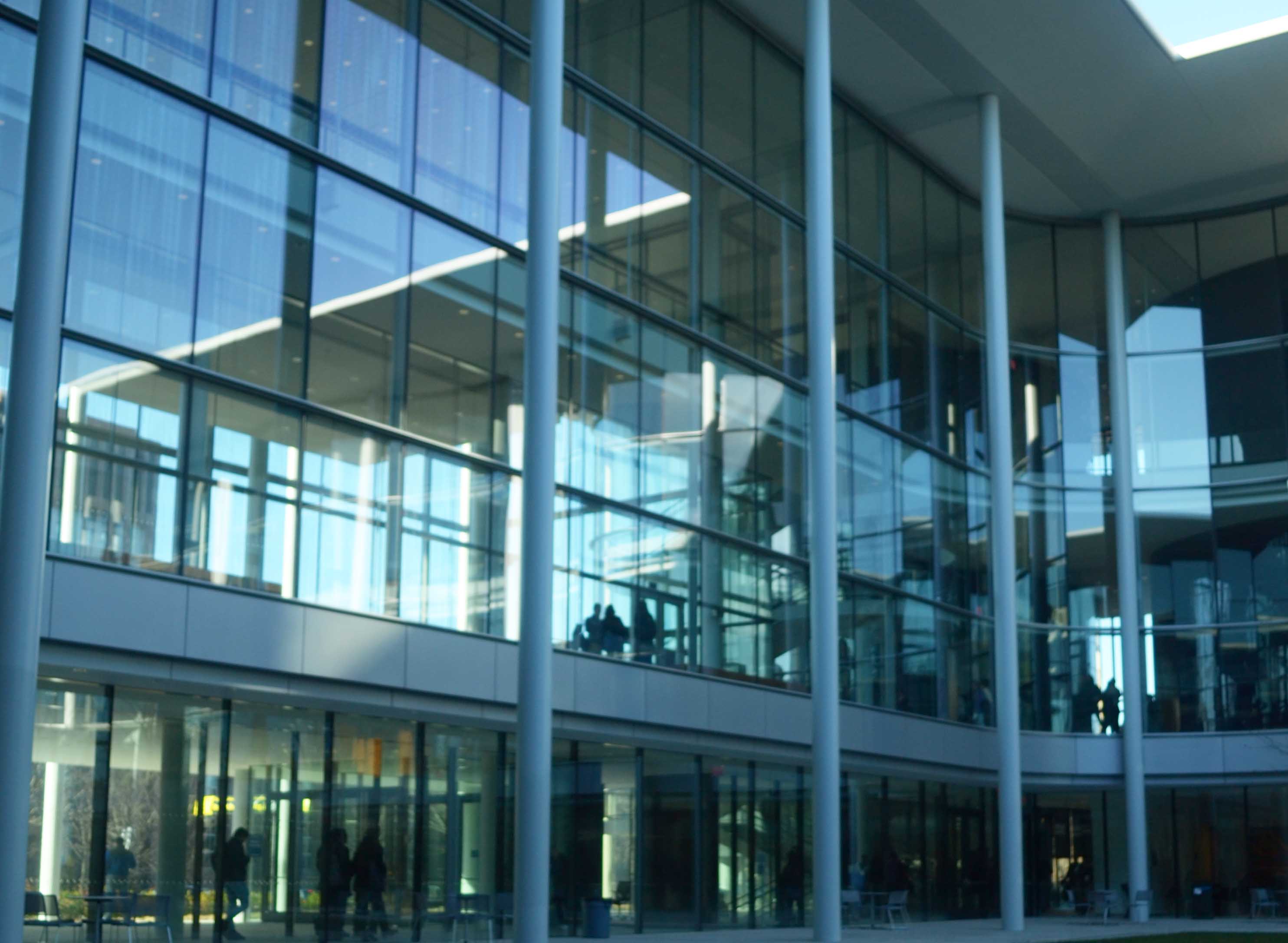
The 130,000-square-foot glass windows of Evans Hall may be easy on the eyes, but they are hard on birds.
When inaugurated in Jan. 2014, the School of Management’s new campus on Whitney Avenue sparked controversy in the New Haven community for its modern architecture that replaced the traditional buildings originally occupying the area. But in the two years since its opening, the SOM has noticed another problem: birds flying into the building’s expansive glass windows and dying. SOM Director of Facilities Bob Saidi said the number of bird strikes peaked at an average of three per day in spring 2014, prompting an investigation into the issue. The school has yet to find a solution, Saidi said, and as spring approaches once again, the school’s facilities team continues to search for solutions.
“No one at Yale SOM wants birds flying into the glass,” Saidi said. “Aside from concern over the birds themselves, we have the disturbing sight of dead birds lying just outside the building, and our custodial staff has to remove the bodies.”
Ornithology professor Richard Prum said the reason for the bird strikes is that many birds have eyes on the side of their heads and therefore do not look forward when flying. He added that transparent objects such as glass windows pose a threat to birds, because birds have not evolved to detect these objects.
Saidi said he began his investigation in fall 2014, when he attended a presentation for architects by the American Bird Conservancy and read related publications written by several different institutions. He learned that migratory birds are especially prone to accidents, which is why the number of strikes peaks in the spring and fall.
Still, his investigation found that possible solutions for an already constructed building are limited. Options are restricted to incorporating screens, latticework or grills on the outside of the glass, or applying patterned window films, Saidi said, adding that both solutions would significantly alter the appearance of Evans Hall — which was designed by a prize-winning architect — and were therefore considered infeasible.
Saidi said he also considered using audible deterrents such as subsonic or ultrasonic sounds, but research showed that such solutions are ineffective.
“[Finding the solutions] is an active area of research,” Prum said. “The [SOM] building is built and it has these problems. It is much easier to avoid them in building design than to fix them afterward.”
He added that some scientists have hypothesized about making glass reflect ultraviolet colors that birds can see but that are transparent to human eyes. But there have not yet been any empirical tests on this technology, Prum added.
The problem has not gone unnoticed among SOM students. Students interviewed said they have witnessed birds killed or stunned by the building’s glass walls.
Shane Burgan SOM ’16 said she and another friend saw an injured bird that crashed into the glass windows last fall. They put it in a shoe box and it recovered from the shock, but she has also seen dead birds on the roof, Burgan said.
Mike Burshteyn SOM ’17 said he saw a bird strike once, adding that he knows SOM students are concerned about the issue and are looking for ways to address it.
At this point, the issue remains unresolved. But Saidi remains optimistic.
“If we hear of any new ideas, we will be happy to investigate them,” Saidi said.
As many as 988 million birds die annually in window collisions, according to The Washington Post.







